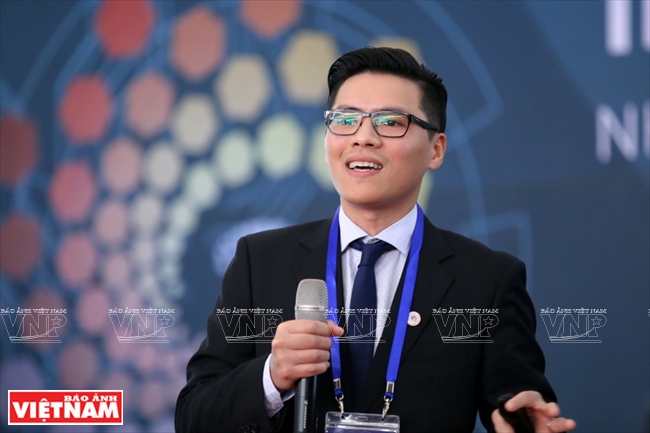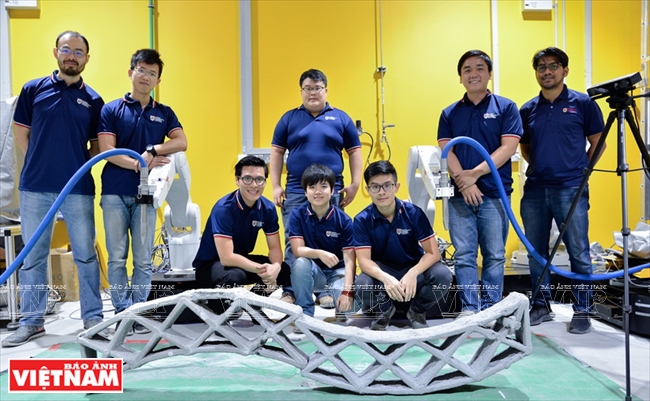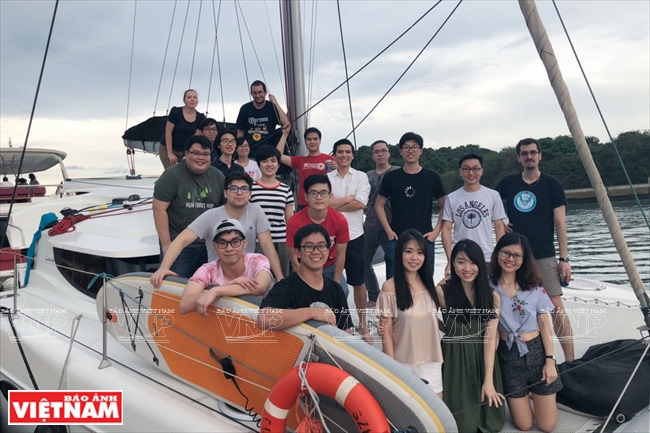As an overseas Vietnamese intellectual invited back to Vietnam by the Prime Minister to discuss the acceleration of the fourth industrial revolution in Vietnam, Assistant Professor Pham Quang Cuong has sketched out a strategy on organic development of robotics which focuses on the development of made-in-Vietnam robots.
Pham Quang Cuong received the Best Paper Award at the conference Robotics: Science and Systems, 2012. Led by Cuong, his team named the CRI Group won second prize at the Airbus Shopfloor Challenge at ICRA 2016.
Cuong’s awards and research were covered by the international media, including the New York Times, the Guardian, Science, Nature, MIT Technology Review and CNN.
Born in 1984 in Hanoi, Pham Quang Cuong graduated from École Normale Supérieure rue d'Ulm in France in 2007. From 2011 to 2013, he was a Fellow of the Japan Society for the Promotion of Science (JSPS), doing research in Robotics at the University of Tokyo. He joined NTU as an Assistant Professor in 2013. He is now a lecturer at the School of Mechanical and Aerospace Engineering, Nanyang Technological University, Singapore.

Assistant Professor Pham Quang Cuong is one of the overseas Vietnamese intellectuals
invited back to Vietnam to discuss the acceleration of Industry 4.0 in Vietnam.

With his colleagues and students at the School of Mechanical and Aerospace Engineering,
Nanyang Technological University, Singapore. Photo: NVCC files

Cuong with his colleagues at a picnic. |
At NTU, Cuong has also taken charge of industrial robotics research at the university’s robot center where about ten professors study different types of robots.
“I once worked with colleagues from Hanoi University of Science and Technology and Ho Chi Minh City University of Technology. They are experts who have published studies in the world’s leading science magazines. They make me believe in technology development in Vietnam.”
Robotics specialist Pham Quang Cuong |
Speaking on the sidelines of a seminar entitled “Robotics and mechatronics in the fourth industrial revolution: Demand and solutions for Vietnamese firms”, Prof. Cuong showed optimism about the future growth of robotics in Vietnam.
According to Cuong, only 100,000-200,000 US dollars is needed to set up a basic robot research lab with advanced equipment of international standards.
“Initially, Vietnam might not manufacture a hard robot, but many other stages in the robot manufacture process can be done,” Cuong said, pointing out that the designing of robot assembly lines and motion programming for robots can be completely handled by Vietnamese IT experts.
He cited that in a one-million-US dollar robot manufacturing line, hard robots cost less than half a million US dollars. The remaining parts can be made domestically, largely reducing the cost, Cuong said.
He also believes that in the near future, Vietnam can make hard robots because this job is not too difficult.

At Nanyang Technological University, Cuong has also taken charge of industrial robotics research
at the university’s robot center. Photo: NVCC files

Cuong speaks with the press on developing made-in-Vietnam robots
on the sidelines of a seminar on connecting Vietnam innovation network.. |
“If the Government spends money on technology development, Vietnam can have made-in-Vietnam robot technology in a couple of years, five years at the latest,” Cuong said.
He suggested that the country prioritize making software for robots and developing robot manufacturing lines, given it is one of the countries reporting the highest internet growth in the world.
Cuong believes he has the opportunity to contribute to future robotics projects in Vietnam. This is especially true in the context that domestic factories have increasingly invested in manufacturing automation, including Vinfast electric car plant where over 1,000 robots are at work.
Story: Thao Vy - Photos: Viet Cuong